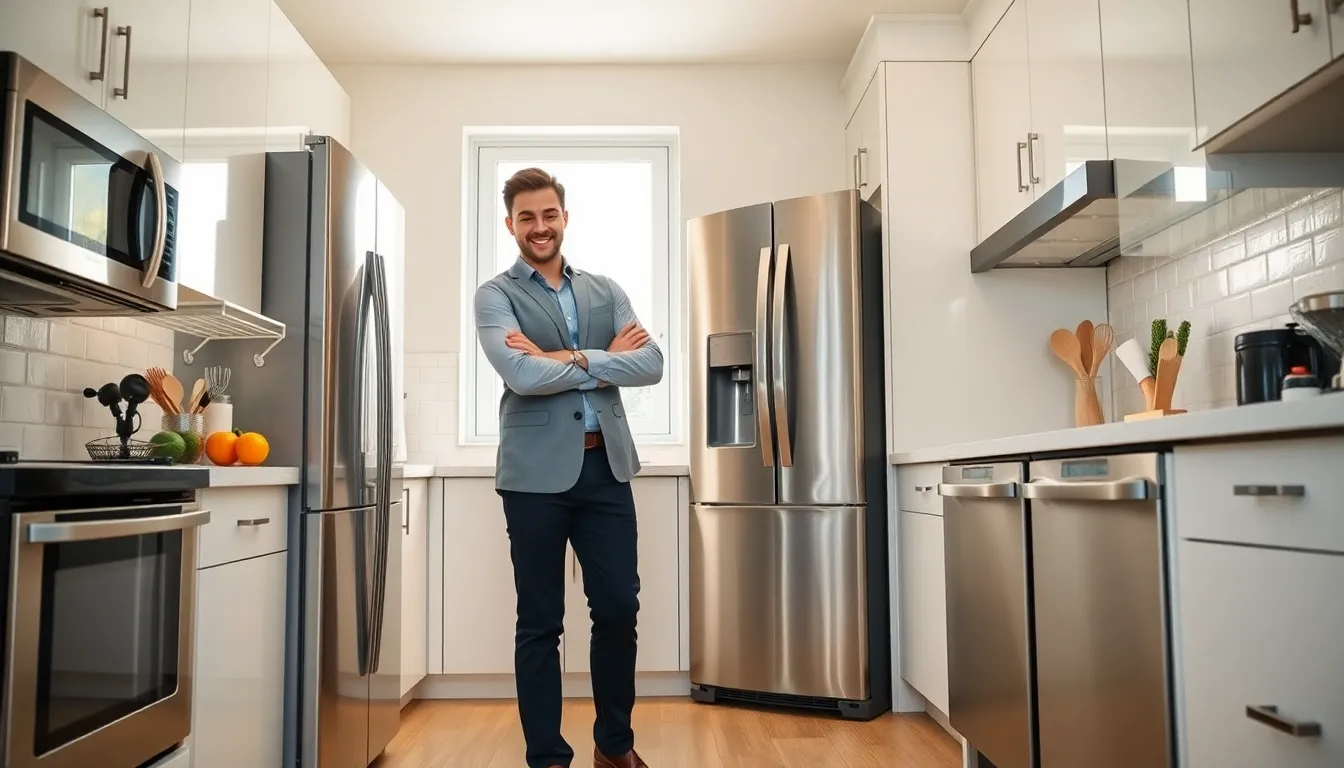If a room could talk, it would want to say, “Let there be light, or, better yet, the perfect light.” Enter the intriguing realm of ambient lighting palettes, where luminosity meets aesthetics, and mood is crafted with a flick of a switch. Whether you’re hoping to set the stage for a cozy night in, impress guests with an elegant dinner party, or simply highlight the beauty of your favorite art pieces, understanding ambient lighting is crucial. In this guide, we’ll shed light, pun intended, on how to create a dazzling ambiance that transforms any space into a sanctuary of comfort and style.
Table of Contents
ToggleAmbient Lighting Palette

Ambient lighting serves as the foundation of illumination in a room. Without it, spaces can feel stark and uninviting. Think of it as the lighting equivalent of a soothing background melody in a film. This type of lighting provides overall illumination, ensuring that every corner of a room is bathed in a warm, welcoming glow. It’s essential to strike a balance, too much light can be overwhelming, while too little can create shadows that hide a space’s best features.
The primary function of ambient lighting is to enable visibility and safety while adding charm to interiors. To achieve the perfect blend, designers recommend employing a mix of natural and artificial light sources. It can come from various fixtures, including ceiling lights, wall sconces, and even lamps, creating a well-rounded lighting experience in any setting.
Types of Ambient Lighting
When it comes to ambient lighting, diversity is the name of the game. Here are the most common types:
- Natural Light: Harnessing sunlight through windows, skylights, or open spaces. Nothing beats sunlight filtering through soft linen curtains, casting playful shadows while brightening the room.
- Recessed Lighting: Installed into the ceiling, these fixtures offer a sleek, modern look. They’re perfect for spaces with low ceilings since they don’t take up any visual real estate.
- Chandeliers: These are not just for ballrooms. Modern chandeliers come in various styles and sizes, adding elegance while providing adequate illumination.
- Wall Sconces: Mounted on walls, they can offer both directional and ambient lighting. They’re versatile and can enhance any décor style, from traditional to contemporary.
- Table and Floor Lamps: Easy to switch out, these fixtures provide flexibility in lighting intensity. They can be used for targeted lighting or to add layers to ambient light.
Creating Your Ambient Lighting Palette
Designing an effective ambient lighting palette doesn’t have to be an intimidating task. With the right approach, you can craft a captivating environment that embodies your unique style and meets functional needs.
Color Schemes for Ambient Lighting
Start by considering the color schemes that resonate with your space. Soft whites and warm yellows are excellent choices for creating a cozy atmosphere, while cooler tones like soft blues or greens can induce a sense of calm. Remember that the color of the light impacts how the room feels. Select fixtures and bulbs that align with your desired mood, whether that be romantic, energizing, or relaxing.
Choosing the Right Fixtures and Bulbs
Next, think about the types of fixtures and bulbs that will best suit your needs. LED bulbs offer energy efficiency and a wide range of colors, while incandescent bulbs provide a warm, inviting glow. Don’t forget about dimmable options. They allow for adjusting the intensity according to different times of the day or activities, enhancing the adaptability of your ambient lighting.
Adjusting Intensity and Warmth
Once you have your fixtures in place, the next step is adjusting the intensity and warmth of your light sources. Dimming options are fantastic for changing moods, romantic dinners might call for a candlelit ambiance, while brighter settings are ideal for reading or working.
Different bulbs also emit various warmth levels. Warm white lights are best for living areas and bedrooms to create that cozy feel, while cooler lights can be useful in kitchens and workspaces to keep energy levels high and alertness sharp. Play with different lumens to discover the magic spectrum for your home or office.
Ambiance and Mood Setting
Creating the right atmosphere requires a keen understanding of the interplay between light and objects. Remember, lighting can dramatically influence perceptions of space and scale. For intimate settings, lower lighting is usually more flattering and inviting. On the other hand, bright, dispersed light can foster energy in larger spaces like studios or event halls.
To effectively set the mood, consider layering your light sources. Combining ambient, accent, and task lighting can provide dynamic versatility to any room. Incorporate smart lighting solutions to control your ambiance remotely, allowing for relationship-building moments with just a tap on your smartphone.
Practical Tips for Implementing Ambient Lighting
Implementing your ambient lighting palette involves some trial and error, but with these tips, you’ll be well on your way:
- Plan Your Layout: Sketch out your room’s layout and designate areas for different lighting needs. Think about where you’ll be sitting, working, or dining to optimize placements.
- Use Mirrors: Strategic placements of mirrors can amplify and disperse light, making spaces feel larger and brighter.
- Incorporate Dimmer Switches: Add dimmer switches for existing fixtures to give flexibility in mood and intensity without needing to replace fixtures.
- Mix and Match: Don’t hesitate to mix different styles of lights. Experimentation can lead to unique combinations that highlight your personality.
- Consider Height: Vary fixture heights to create visual interest and depth throughout the space.



